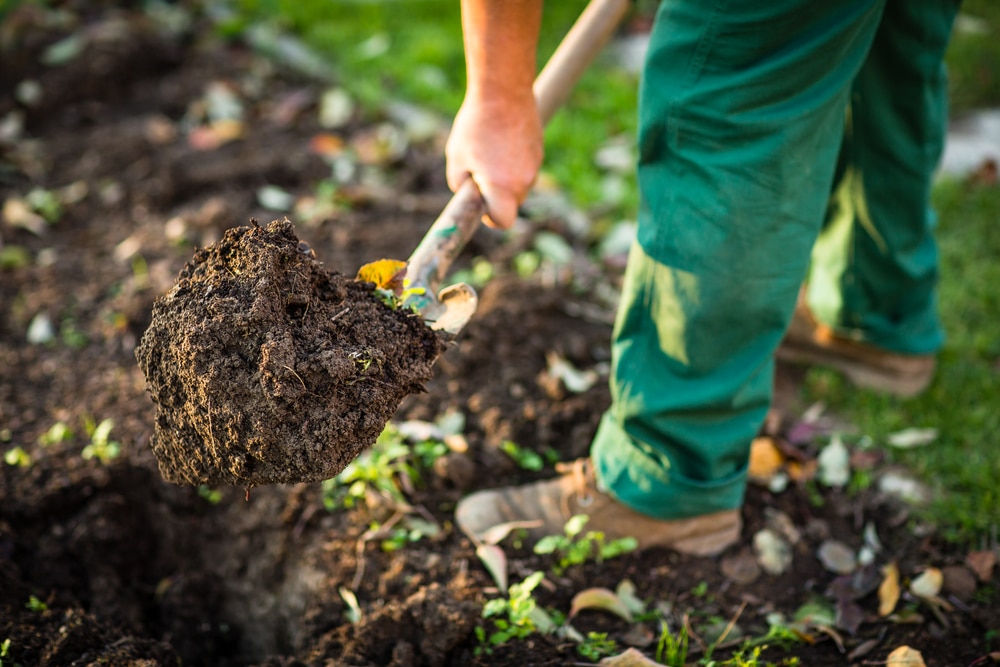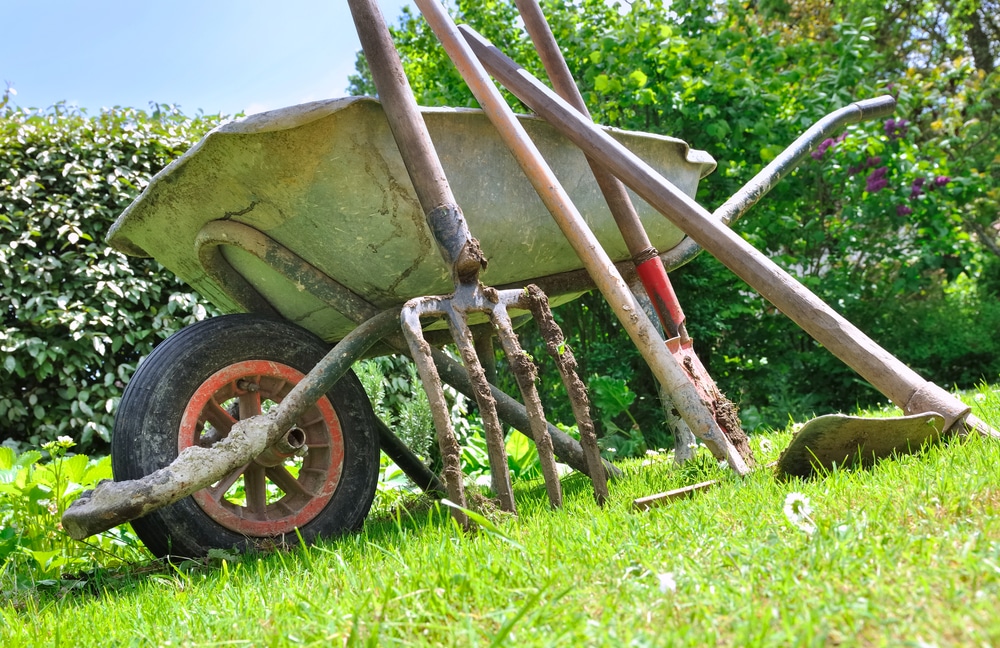Spring and summer are usually the times of the year when you are using and tending to your garden the most.
However, just because summer is over doesn’t mean that you can just leave your garden until next spring. There is still some work that needs to be done to prepare your garden for the colder winter months.
Taking care of these tasks now will ensure your lawn, plants, and soil remain healthy throughout the dark and cold days of winter.
Plus, your garden will come back thriving in the spring, so you can jump right back into your spring gardening tasks without worrying about fixing your dead garden.
Cut Away All Diseased and Dead Plants
Most people won’t use their gardens much over winter, so it may be tempting to just leave your dead or dying plants until spring so that you can just deal with them then.
However, if you just leave your dead plants, you’ll be inviting many pests, such as slugs and snails, into your garden. These pests could start to feast on your seedlings next spring. Other pests may overwinter in your dead plants.
Removing all dead and dying plants from your garden now will prevent this from happening. Plus, clearing away dead plants will leave your soil exposed, so predators like birds can do their work in protecting the precious soil.
Most dead plant materials can be composted, and you can then use this compost when spring comes around. Diseased plants should be removed and disposed of quickly to prevent the disease from spreading to your other plants. You can dispose of these plants in your garden waste bin.
Now is also a good time to remove weeds from your garden and take control of any spreading plants, such as ivy or self-seeding plants, such as poppies.
Dig and pull out as much of the weed root as possible to prevent the weeds from coming back. Doing this will weaken the plant and make it more likely to die off over winter. Weeds should also be disposed of in the garden waste bin rather than composted.
You should also trim back trees during this time. It’s easier to trim trees now when the leaves have started to fall off. Trimming large trees can be dangerous, so it may be better to hire a professional for this work. Tree trimming costs can vary, depending on the number of trees that you have and the size of the job at hand.

Do Some General Garden Maintenance
If you have any outbuildings or sheds in your garden, these will benefit from some TLC before winter comes around. Inspect these areas for any damaged parts, loose boards, or rotten boards.
Also, make sure the hinges on the door are in good condition to ensure the door can keep out rain, draughts and snow.
If you are storing your gardening tools in the shed or outbuilding, sharpen and oil these as needed. After the gardening season, your tools can become dull, making them more difficult to use.
Doing this type of maintenance now will mean that you can get on with your gardening chores as soon as spring comes around.
Once you’ve sharpened any blades on the tools, rub them with oil to protect them for winter. You can also oil the wooden handles on your tools. This will prevent them from drying out or becoming rusty in the winter.
Before storing plant pots, seed trays, and any other garden equipment, give them a good wash or rinse. Give them time to dry completely before putting them in storage to prevent mould growth.
Protect The Perennials and Over-Wintering Crops
You can prune most fruit trees and bushes at this time of the year. Check which varieties you have in your garden and take care of any pruning now as required.
If any of your fruit trees or bushes have stakes or ties, make sure these are in good condition and ready for the winter months. Any new plants should also be staked and tied to prevent them from becoming damaged by the winter weather.
Plant pots and containers should be moved to a sheltered space, if possible, or brought indoors. To prevent terracotta pots from cracking in freezing conditions, these will need to be raised from the ground and wrapped up in bubble wrap.
Plants that are sensitive to freezing conditions should be placed in a greenhouse or brought indoors to protect them until spring.
If you have any netting on your plants, check to make sure it is in good condition, and install additional protection as needed. If you notice any leaves or debris surrounding your garden plants, clear them away so that the plants can get enough water and also prevent mould or diseases.

Complete The Last Mow
The last mow of the year should be complete in late autumn. The timeframes may vary depending on your location and the climate in your area.
For a more accurate timeframe, all you need to do is pay attention to your lawn, as this will help you determine when it’s time for the last cut. When your grass starts growing much slower, this is a sign that it’s now time for the last cut of the year.
For the last cut of the year, you want to cut the grass as short as possible. The lawn will likely still grow slightly after you’ve completed the last cut. This is before the first frost starts to stunt the lawn growth. If you cut the grass short, this means it will have room to grow slightly before the growth is stunted.
Prepare Your Lawn For Winter
The winter weather can be harsh, bringing rain, snow, and wind. To prevent the grass from becoming damaged, you will need to aerate the lawn.
Aerating the lawn properly will give it a much better chance of surviving the extreme weather conditions in the winter months. You don’t need any fancy tools to complete this job.
If you don’t have an aerating machine, simply use a garden fork and stab this into the ground several times across the entire lawn. This will move the soil slightly and create small holes, preventing the soil from becoming compact, improving the drainage and reducing the chances of water damage.
It’s also a good idea to give your lawn some new seeds at this time. Distribute fresh grass seeds evenly across the entire surface of the lawn.
If you notice any bald patches on the lawn, these areas will require additional seeds. The new seedlings will make any existing problems appear much neater and will help to make sure your entire lawn comes back full and lush next spring.




